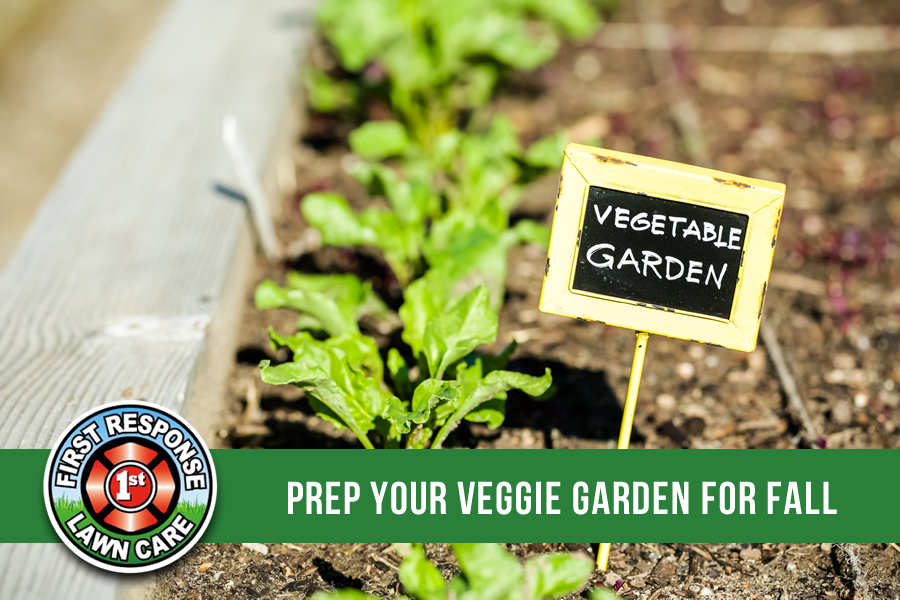
Time to Plant Fall Vegetables
August is the time to plant Fall vegetables. Set out transplants of broccoli, cauliflower, and collards. Sow seeds of beets, lettuce, English peas, spinach, turnips, and mustard.
The soil in your garden bed should be loose and easy to work. If it is not, add large amounts of compost or other organic amendments. You can use a tiller or a shovel to work the dirt.
Vegetables don’t have to have their own bed. You can intermingle them among established ornamental plants in your flowerbeds, or grow them in containers. The great thing about using containers is that you can move them at will to catch the proper amount of sunlight.
Vegetables do need lots of sunlight, generally at least six hours of direct sun. Those with edible roots – beets, carrots and radishes – plus broccoli and cauliflower can get by with an hour less sun. And leafy plants such as lettuce or spinach do better with protection from the hot afternoon sun.
Add a slow-release fertilizer if you haven’t fed the bed during the year. If you have, don’t bother. Organic fertilizers such as cottonseed meal work well, though there are plenty of nonorganic fertilizers available. One tip: Before going to the garden center, measure your bed; that way, you’ll know exactly how much to buy, as packages list how many square feet they cover. As always, follow package directions.
Make sure the soil is moist before you plant seeds, as it aids germination. Also, regular watering after you plant is vital to ensure that the August heat doesn’t burn your crop.
Experienced gardeners recommend fertilizing again a few weeks after planting. Just water in the fertilizer around the base of each plant.
Fall will be the time to sow cold-season crops such as lettuce, broccoli, cabbage and cauliflower. Don’t plant seeds of those until early September.
When we reach October, most people will be longing for cool weather. But if you plant tomato transplants now, you’ll be hoping the hot days continue.
•Tomatoes need hot weather to set fruit. Aug. 1 is a bit late to be assured that the fruit has time to mature before first frost, which arrives on average in mid-November.
•Transplants will give you the head start you need.
•Texas AgriLife Extension Service has put together a list of tomato varieties that do well in our area. Don’t expect to find most of them at your local nursery or garden store. Spring is high season for tomato transplants.
•The recommended cultivars: ‘Bingo’, ‘Carnival’, ‘Celebrity’, ‘Sunpride’, ‘Sunchief’, ‘SunLeaper’, ‘Amelia’, ‘Solar Fire’, ‘Florida 47’, ‘Florida 91’, ‘Top Gun’, ‘Porter’, ‘Roma’, ‘Red Cherry’, ‘Yellow Pear’ and ‘BHN444’.
Water can make the difference in whether your vegetable crop succeeds or fails. Too much water – rarely a problem in Texas – can drown plants; too little, and they die.
The most recommended method, both for the plants and for your pocketbook, is to water deeply, but only when needed. Stick your finger into the soil near the plants. If you feel moisture a few inches down, you can wait to water. If dry, water enough to get the soil moist at least 6 inches deep.
The Web site www.learn2grow.com explains five methods of watering vegetables:
Drip irrigation: Delivers precise amounts of water directly to plant roots. Can be time-consuming to set up initially. Saves water costs in the long run.
Trench irrigation: Used when vegetables are planted in rows. Fill a trench that you dig alongside your row vegetables with water. The water will penetrate deeply into the root zone.
Moat irrigation: This close relative of trench irrigation is especially useful when crops are planted on hills. Dig a moat around each plant (square or round) and fill the moat with water when plants need moisture.
Soaker-hose irrigation: Like drip irrigation, soaker hoses deliver water directly to roots. They are not as precise, though they are usually cheaper and easier to lay down.
Overhead misting: Especially for cool-season vegetables. A gentle soaking from a hose-end nozzle allows water to slowly seep in. Time-consuming, though.
First Response Lawn Care can help you with irrigation, fertilization and much more if you need a helping hand with your lawn and garden!

